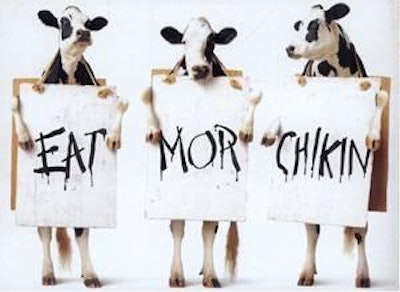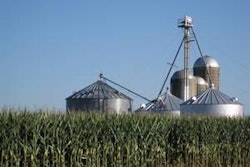
Chicken and turkey meat are arguably more sustainable than most other meats. It takes four pounds of grain and 4,000 gallons of water (including all the water to grow the grain as well as to raise and slaughter the animals) to produce a single pound of feedlot beef. Chicken, on the other hand, needs only two pounds of grain and 750 gallons of water (turkey slightly more). Pork is between poultry and beef. To be fair to beef, grass-fed beef needs little or no grain. However, that highly sustainable and delicious meat represents only 9% of world cattle production.
What is sustainability?
Poultry meat is said to be more sustainable, but what does sustainability really mean? Sustainability, in a nutshell, is meeting the needs of the present generation without compromising the ability of future generations to meet their needs. Does sustainability matter? In the short term, no, it does not matter. However, in the longer term, it does. It is said that “If something cannot go on forever, it will stop.” That’s sometimes rephrased as, “Trends that can’t continue, won’t.” Sustainability is not easy because it is an additional burden undertaken today to help future generations.
Chart 1: Feed, time and water needed to produce one pound of meat
Those who are primarily interested in maximizing short-term returns find the discussion of sustainability to be annoying at best. However, those who are interested in the management of resources to increase value over the long run (the Greek meaning of the word economics) find sustainability to be inspirational, a guiding light for long-term profitability and respect for future generations.
Rules for sustainability
Does sustainability have some rules? Economist Herman Daly suggested three simple rules or laws of sustainability:
- For a renewable resource like soil, water, forests and wild fish, the sustainable rate of use can be no greater than the rate of regeneration. For example, a fish harvest is unsustainable if fish are caught at a greater rate than the growth of the remaining population.
- For a non-renewable source like fossil fuel, the sustainable rate of use can be no greater than the rate at which an equivalent stream of renewable energy is developed. For example, an oil deposit would be used sustainably if an equivalent stream of renewable energy were developed to replace the declining production of the deposit.
- For a pollutant, the sustainable rate of emission can be no greater than the rate at which that pollutant can be recycled, absorbed or rendered harmless.
How are humans doing on following the laws of sustainability? The evidence seems to suggest that it isn’t easy and we are having a hard time.
First rule – Renewable resources
Ignoring the politicized subject of global warming, consider soil and water.
Although the amount of cultivated land has remained relatively constant for decades at around 3.7 billion acres, there is a constant loss of land to urbanization, salinization, erosion and desertification. At the same time, new farmland is being brought into production. As a result, the total area of potentially arable land is shrinking while the total area of unproductive land is growing. Per capita arable land dropped from 1.5 acres in 1950 to 0.5 today and is on track to fall to just 0.25 acre per person in 2050.
Chart 2: The genetic advance of the chicken industry
So, what if there is less land per person? Doesn’t technology make it possible to feed a growing population with less land per person thanks to the increase in yields? Yes, that certainly has been true and the potential of technology is seemingly limitless. Nevertheless, it is a clear violation of the first law of sustainability; the rate of destruction of land and soil should be no greater than the rate of reclamation.
The first rule is even more clearly violated in the use of water. The Ogalalla, an aquifer that feeds 20% of the irrigated land in the U.S., is being overdrawn by 12 cubic kilometers per year. North China overdraws 30 cubic kilometers of water per year. In northern India, water tables are dropping by half a meter per year. Desert regions around the world are mining fossil water from aquifers that have no recharge. The use of water in this way is unsustainable. Wheat production in Saudi Arabia, to cite the most extreme example, is being phased out due to the exhaustion of the aquifer.
Second rule – Non-renewable resources
For non-renewable resources like oil, the rate of use should be no higher than the rate of substitution with renewable alternatives. Over the course of this year, 30 billion barrels oil will be consumed worth more than $2 trillion dollars. The worldwide investment in renewable alternatives, although praiseworthy, comes nowhere close to a one-for-one substitution.
Aren’t there lots of oil sources yet to be discovered and developed like oil sands, oil shale and deep ocean oil? Yes, there certainly are tremendous new sources and at higher prices, plenty of oil will be produced from numerous new sources. Nevertheless, it is a violation of the second law of sustainability if use is greater than the rate at which an equivalent stream of renewable energy is developed. Oil, in the end, is non-renewable no matter how abundantly it can be extracted at the moment.
Third rule – Recycling pollutants
The third law of sustainability is perhaps the one for which humans have taken the most seriously for which the greatest expenditure has been made. However, despite massive efforts to clean up water and air, the amount of potable water is declining worldwide and air pollution is, once again, deteriorating after a period of impressive improvement.
What can the poultry industry do to improve sustainability?
Strictly following the three rules of sustainability may only be a utopian dream. Nevertheless, the rules can help set a moral compass. Keeping the goal in mind, there are things that every industry and person can do to improve sustainability and push the day of reckoning further off into the future.
Unfortunately, substantially improving sustainability will bring additional short-term burdens, including, in all likelihood, higher grain and energy costs. In addition, governments cannot always be counted on to do the right things. At times they will make things worse with ham-handed interventions such as the counterproductive ethanol boondoggle.
Nevertheless, it is not just about new burdens. There are opportunities as well. Included here are “Five sustainable steps for poultry.” These changes are examples of what the poultry industry and growers can do to make the planet more sustainable and perhaps even make themselves more profitable.
Five sustainable steps for poultry
1. Produce renewable electricity
The U.S. chicken industry contracts for approximately 50,000 broiler houses. The houses are mostly located in places where the sun really does shine and each has about 15,000 square feet of roof angled into the sun from east/west oriented houses. That means there are 750 million square feet of south-facing broiler house roof surface area in the U.S. If that area were covered with solar panels, peak production would reach 15,000 megawatts enough to replace 22 large coal-fired power plants in the middle of the day.
Unfortunately, the sun goes down at night and the cost of is currently too high. Nevertheless, peak demand for power in the South comes when the sun is shining and chicken houses could provide an important part of expensive summer peak demand. As for cost, it is estimated that solar power will be able to match peak-hour pricing of coal and natural gas by 2020 without subsidies. It won’t be long before the South cools itself in the afternoon with the blistering heat of sun falling on 21st century broiler houses.
2. Produce hot air, hot water and biodiesel
Before solar cells become feasible, broiler house roofs are likely to be used to produce heat for brooding. Gas use in poultry houses will be significantly reduced in the next 20 years as engineers figure out how to economically transfer solar heat from the roof to the floor.
Poultry processing plants use considerable amounts of energy for heating water, cooling water and running electric motors. The roofs of processing plants are likely to also become the site of hot water production and eventually solar electric generation.
Another resource from processing plants is poultry fat to produce biodiesel. Although this process is getting started in fits and starts, it appears to be likely to have a long term success.
3. Continue to improve feed conversion and yield
The chicken industry is the most sustainable meat thanks in part to an amazing improvement in genetics (combined with good farm management) over the last 80 years. The modern bird is a productive wonder and productivity continues to improve. In 1925 it took 112 days to get a 2 pound chicken with a feed conversion of 4.7 to 1. By 2045 it will take 40 days to get a 7 pound chicken with a feed conversion of 1.5 to 1. Similar improvements have taken place in turkey production.
4. Produce more poultry in grain-surplus countries
Producing more poultry in grain surplus countries improves sustainability. Countries short of water “import” water by importing chicken meat from countries with surplus grain. Looking at the countries that export the most corn and wheat combined per capita provides a good list of the 14 most favored countries around the world for chicken production thanks to grain surpluses.
Chart 3: Per capita export of corn and wheat combined
5. Produce more poultry
Finally, since poultry is the most sustainable meat, the more poultry produced, the more sustainable the consumption of meat becomes. When poultry substitutes for other meats, less grain and water are needed and total sustainability is improved. Eat more poultry, save the planet!


















